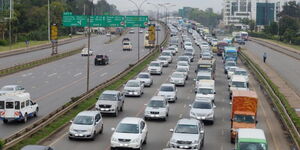The government is set to implement three new speed limits in a move aimed at addressing the rising road accidents.
In the National Road Safety Action Plan 2024-2028, speed limit reforms were highlighted as a strategy to reduce accident fatalities by 50 per cent by 2030.
Therefore, the government is proposing to enforce limits between 30 and 70 kilometres per hour in specific areas.
For instance, should the new limits be adopted, motorists will be required to observe a 30km/hr in select places such as areas where pedestrians and cyclists pass frequently. This includes; villages, school zones and commercial areas.
NTSA classifies such as having a high risk for collisions.
Additionally, the 30 km/hr limit will also be observed in areas where children can interact with traffic.
Motorists will also be required to observe a 50 km/hr limit at road intersections. These areas were highlighted to be prone to side-impact collisions.
"A comprehensive speed limit-setting reform project will be initiated, including a scientific, safe systems-focused, assessment of speed limit-setting rules and practices as they currently apply in Kenya, across all national and county roads.
"A gap analysis between these speed limit management practices and safe system principles lead to consideration of the 70 km/h where there is potential for head-on collisions, such as undivided rural highways," read the statement in part.
Equally, it was added that safer speed limits would be considered for rural and urban areas.
Meanwhile, the report, which President William Ruto launched on Wednesday, April 17, also noted that the technology will be key in enforcing the speed limits and fining motorists.
"Excess motor vehicle speed is a major problem around the world, and Kenya is no exception. Police cannot be everywhere and need to be able to use automated enforcement systems to control this critical safety issue. A demonstration project will be scoped and delivered which applies proven safety technology in Kenya.
"This will involve Scoping the extent of the demonstration project and the types of detection systems which will be deployed, such as fixed cameras (very effective at specific high-risk sites), mobile cameras (very effective at network-wide general deterrence), and average speed cameras (very effective at achieving compliance on long lengths of highway)," read the report in part.
As directed by the President, the instant fines will be rolled out within the next 90 days.
On the other hand, cameras will be installed along major roads and highways by the end of December.












